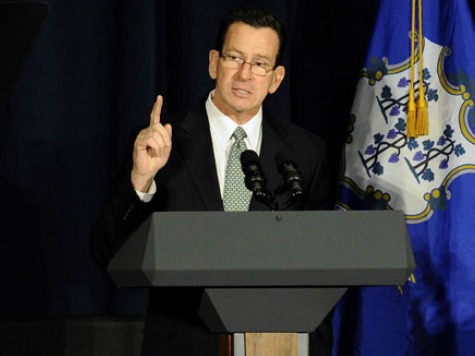
Connecticut Gov. Dannel Malloy (D-WFP) appears to be unwilling to sign a bill that would ban chocolate milk in the state’s public schools.
Earlier in the week, the state’s General Assembly unanimously approved a bill that was initially purported to make “minor revisions” to education statutes. Added to the bill, however, was a provision that mandated what types of beverages could be served in public schools.
As reported by CT News Junkie, the amended legislation states, “low-fat milk that is unflavored or fat-free milk that is flavored or unflavored that contains no artificial sweeteners, nonnutritive sweeteners or sugar alcohols, no added sodium and no more than four grams of sugar per ounce” will be served. In addition, the milk must not obtain more than 35 percent of its calories from fat per portion and no more than 10 percent of its calories from saturated fat per portion.
The size of beverages is also dictated by the bill. Beverages can not exceed 8 fluid ounces for elementary schools and 12 ounces for middle and high schools.
Pat Baird, a registered dietitian nutritionist, said the legislation’s language means that chocolate milk would be eliminated from school lunches because all chocolate milk has sodium.
Chocolate milk typically contains 60-90 milligrams of added salt, though it is not considered to be a high-sodium beverage. The sodium is added to balance out the bitterness of the cocoa.
“This will have a significant impact on school meal participation and ultimately nutrient intake for students,” Baird said. “School chocolate milk has between 60-90 mg added sodium, which is only 2-4 percent of sodium intake in a day. Removing chocolate milk hardly moves the needle on added sodium intake; but what it does remove is critical nutrients for growth and development.”
Baird added that the majority of the milk sold in schools is chocolate and “research has shown that when chocolate milk is not served, milk consumption drops 35 percent and does not recover.”
Rep. Timothy Ackert, the ranking Republican on the Education Committee, said lawmakers were told by legislative attorneys that they were mandated to adopt the chocolate milk ban based on the federal Hunger-Free Kids Act. Ackert said he and his colleagues were told that if they changed the language they could risk losing federal funds headed to the state.
As the Washington Times reported in March, the Healthy, Hunger-Free Kids Act, initiated by First Lady Michelle Obama, has been widely criticized by students on social media who have complained that lunches served in school are leaving them hungry and dissatisfied.
The new school lunch standards have led to over one million children leaving the lunch line, says a Government Accountability Office report released in January. In 2012, the federal government nutrition program cost over $11 billion.
On Friday, FoxNews.com reported that Malloy had not yet received the bill, but that when he did he planned to review it in detail.
Malloy spokesman Andrew Doba said, “The Governor is not supportive of banning chocolate milk in public schools. While we must be extremely mindful of the nutritional value of what’s offered to students, ensuring an appropriate array of options helps to ensure that kids received the calcium and other nutrients they need.”
Trish Molloy, president of the School Nutrition Association of Connecticut, told FoxNews.com her organization was in “total agreement” with Malloy, adding that she had no indication the ban was ever going to actually materialize.
“The intent was never to eliminate chocolate milk,” Molloy said. “We all support the position that kids drink more milk when flavored milk is available.”

COMMENTS
Please let us know if you're having issues with commenting.